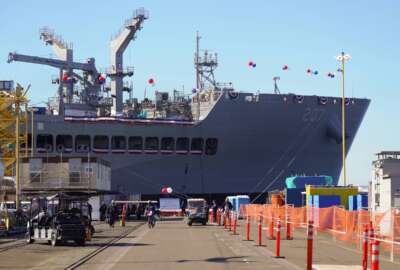In Army Reserve, clearing out ‘deadwood’ will make room for best and brightest
The Army Reserve wants to make it easier for soldiers in the active component of the Army to make their way back and forth to the reserve components. To do it, the...
wfedstaff | June 4, 2015 5:02 pm
Members of the U.S. Marine Corps have a saying: Once a Marine, always a Marine. The Army Reserve wants soldiers to start thinking the same way.
Reserve leaders say they’re working on policies and procedures that would let soldiers who are part of the upcoming Army drawdown transition seamlessly into the reserve component of the military instead of hanging up their uniforms for good. 
The Army will shed approximately 80,000 soldiers from its active component over the next five years under budget plans the Pentagon will release in mid-February. But the Reserve expects to maintain nearly all of its existing end strength, declining by perhaps only 1,000 soldiers or so, Maj. Gen. Keith Thurgood, the Reserve’s chief of staff told Federal News Radio.
As of today, the Reserve doesn’t have room to take in the best and brightest from the active Army who will soon depart as a result of budget constraints. It will have to make room, Thurgood said.
“What we need to do in the Army Reserve is get rid of the deadwood,” he said. “If we have soldiers that aren’t participating, if they’re low-quality, what we need to do is say, ‘thank you for your service, but you’re not going to fit in the future force.’ Because the future force is going to be smaller and more capable, and therefore we have to have quality people. So our challenge is to create spaces for the best people who are coming off of active duty. We’ve got plans to do that.”
The Army is not positioned, however, to make the transition between active and reserve as seamless as it needs to be. The service as a whole lacks an integrated strategy for managing its people, Thurgood said.
“That would include things like the pay system, the retirement system and the personnel records system,” he said. “Today we don’t have that. We’re working toward that, and I think it will be very powerful. It’s really important that we get this right at this moment in terms of the soldier for life idea. With the drawdown of the active force, this the time when we need to take the skill sets that we’ve developed over the last decade of war that we don’t want to let go and transition them into future operations. It’s a very important idea. It’s wrought with complexities, but we need to figure out how to go do that.” 
“Before, people said, ‘I thought I was only going to be deployed one weekend a month and two weeks a year,’ and our end strength actually went down,” he said. “But as we started to hire the right kinds of soldiers, our end strength came back up. And now our challenge is keeping them motivated. We have to keep those that we have in the force actively engaged and employed.”
New legal provisions in the 2012 version the National Defense Authorization Act might help. For instance, Reserve forces now have new authorities to respond to domestic emergencies at the request of governors, who traditionally have had to rely exclusively on their state’s National Guard forces in the event of fires, floods, earthquakes and other natural disasters.
“It’s a great value,” Thurgood said. “The American people don’t make a distinction between the active force, the National Guard and the Reserve and who owns which bulldozer. When the nation calls, they don’t care about component. They want something to happen.”
RELATED STORIES:
Guard, Reserves to play key role in “reversibility”
Raises, bases potential victims of DoD budget cuts
After decade of war, how are reserves holding up
Copyright © 2024 Federal News Network. All rights reserved. This website is not intended for users located within the European Economic Area.
Jared Serbu is deputy editor of Federal News Network and reports on the Defense Department’s contracting, legislative, workforce and IT issues.
Follow @jserbuWFED






